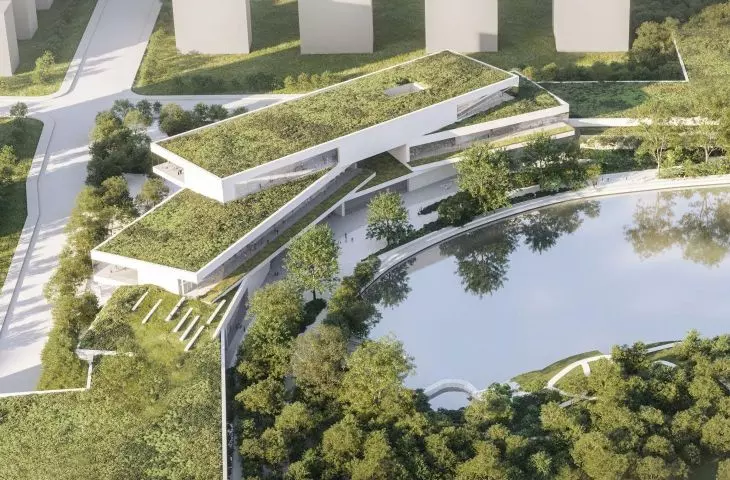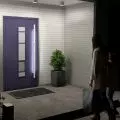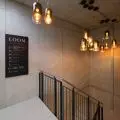The {tag:pracownie} designed a modern cultural and educational complex and won third prize in the international Museum Library Cultural Complex competition in Incheon, South Korea! The Poles proposed a multi-level structure resembling a bridge sunk in greenery and created new public spaces.
WXCA's project received Third Prize, a model of the museum and library
© WXCA
The challenge of the international competition was the design of a Cultural and Education Center in Geomdan (Incheon District) with a museum and library, as well as a program of public spaces bringing together the social life of both the district and the entire metropolis. The organizers plan to create a futuristic, comprehensive cultural cluster in which knowledge, history, people, technology and the environment will be harmonized by combining material culture (museum) and archival culture (library). The proposed facility was also intended to become a landmark.
WCXA's proposal takes the form of piled, horizontal, greenery-covered platforms extending over the lake
image: Piotr Banak © WXCA
Poles on the podium!
70 studios from 15 different countries entered the international competition. The projects were judged by a jury that included YongMi Kim (G.S Architects & Associates), Hee Chan Park (Studio Heech), Dae Sung Woo (Woo Projects Architects), Sung Kwan Lee (Hanul Architects & Engineers), Min Jung Cho (Inha University Architecture), Lauraunt Pereira (Chae-Pereira Architects), John Hong (Seoul National University Architecture), Young Soo You (Incheon University Architecture & Urban Design). The experts decided to award the 1st Prize to Unsangdong Architects Cooperation from South Korea, and the 2nd Prize of KRW 40,000,000 for The Living Bridge project went to a team of two studios, ArchiWorkshop from South Korea and Studio Akkerhuis from France.
Third Prize of KRW 30,000,000 went to Warsaw-based studio WXCA. The project was prepared by a team consisting of Marta Sekulska-Wronska, Szczepan Wronski, Michal Czerwinski, Anna Dobek-Lenczewska, Anna Majewska-Karolak, Michal Sokolowski, Hanna Galas, Malgorzata Bonowicz, Piotr Hardt and Jakub Matela. The visuals are the responsibility of Piotr Banak and WXCA, with industry consultation by UK-based Buro Happold.
The architects sought a combination of culture and nature
image: Piotr Banak © WXCA
tapping into tradition
Working on the project was an opportunity to explore themes in South Korean culture and heritage that were surprising to us. We sought innovation by reaching out to traditional Korean concepts such as Suseok—art that draws inspiration from natural rocks and stones, building hanok—prototypes of modern sustainable architecture, and a specific ability to see the relationship between culture and nature. We sought to translate these ideas into a contemporary, engaging, multi-layered experience, taking on the challenge of finding a vision for a new, sustainable way to build the future," say members of the award-winning team.
gate to the park
image: Piotr Banak © WXCA
unobvious connections
The proposal from Poland takes the form of piled, horizontal, greenery-covered platforms stretching over a lake. The composition surrounds the promenade, creating a boulevard complemented by publicly accessible indoor and outdoor spaces located in the first floor of the building. The aforementioned platforms form a multi-level bridge and, as the architects say:
It is a metaphor for building new, non-obvious connections: social, cultural, interdisciplinary, ecological or landscape, and in a broader perspective—the connection between culture and nature. The heavy, massive forms express the materiality of substance, combining the experience of natural geological formations with the universal beauty of the stone curves of archaeological discoveries.
The WXCA project was awarded the Third Prize
image: Piotr Banak © WXCA
spatial modules
The proposed structure highlights orthogonal spatial modules that form an integral whole. Each module encloses a functional unit with an outdoor garden. The layout of the volumes creates a communication axis between the lake and the city, there is a town square and public spaces that visitors can freely explore.
entrance hall of the library
vision: Piotr Banak © WXCA
The level above the promenade, the architects dedicated a pedestrian green belt cutting through the complex, seamlessly connecting the two hills surrounding the building. The sculptural form of the modules connects to the „greenbelt” route that binds the entire district together, creating a new cultural center.











































